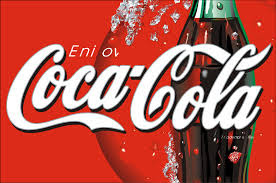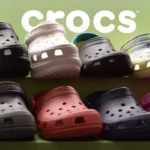
Coca-Cola’s original formula included extracts of the African kola nut and coca leaves, both strong stimulants. It was one of those patent medicines sold in the 1800’s that actually contained traces of cocaine. By 1903, the use of cocaine was so controversial that the Coca-Cola Company decided to only use “spent coca leaves”. It also stopped advertising Coca-Cola as a cure for headaches and other ills.
Coca-Cola and the Olympic Games began their association in the Summer of 1928.
When World War II began, the company’s use of sugar in the manufacturing of syrup for civilian consumption was restricted to 50% of its pre-war average due to rationing. The rationing ended in August, 1947.
If all the Coca-Cola ever produced to this point were to gush from “Old Faithful” at its normal rate of 15,000 gallons every hour, the geyser would flow continually for over 1,685 years! Another way of putting that fact—if the geyser had been continually erupting since 313 A.D., it would just be running out about now!
In Brazil, a local bottler makes 3-day trips up the Amazon River to deliver Coca-Cola to remote locations!
The slogan “Good to the Last Drop” was first used by the Coca-Cola Company in 1908. It later became the slogan for Maxwell House coffee.
Cuba and Panama were the first two countries to bottle Coca-Cola outside of the U.S.
Coca-Cola trucks travel over 1,000,000 miles a day to supply consumers with soft drinks!
The greater Mexico City bottler produces the greatest volume of any Coca-Cola bottler on the globe.
Coca-Cola was first shipped in used whiskey kegs and barrels, but they were painted red to give them a distinctive mark. The color red has been associated with the product ever since.
It took 58 years–until 1944–to sell the first billion gallons of Coca-Cola syrup. Today, that billion gallon mark falls approximately every 7-1/2 months!
Coca-Cola products are now sold in approximately 200 countries and their logo is written in over 80 languages!
Coca-Cola is the world’s most recognizable trademark—recognized by 94% of the world’s population!
If all the vending machines in the United States were stacked one ontop another, the pile would be over 450 miles high!
The consumption of Coca-Cola Classic in the U.S. exceeds each of the following: bottled water, juices, powdered drinks, wine and distilled spirits
There are 7,000 Coca-Cola products consumed worldwide every single second!
More than 5 billion bottles of Coca-Cola were consumed by military personnel during WWII
Diet Coke is known as Coca-Cola Light in most countries outside of the U.S. and Canada. It is the most popular diet cola worldwide.
The name of the flavour base included in the secret formula for ‘Coca-Cola’ is referred to as 7X.
Only a few people know the secret formula for ‘Coca-Cola’. Concentrate for ‘Coca-Cola’ is made in a number of centralised production facilities, and is exported to all countries in the world that bottle ‘Coca-Cola’.
‘Coca-Cola’ was invented on May 8, 1886 by Dr John Styth Pemberton, a pharmacist, in Atlanta, Georgia, USA. It first went on sale in Jacob’s Pharmacy, Atlanta, Georgia.
The type of print used for the ‘Coca-Cola’ logo is called “Spencerian Script”.
‘Coca-Cola’ was first sold in Australia in 1937 and in New Zealand in 1939.
If all the ‘Coca-Cola’ ever produced was poured into the famous contour bottles and placed end to end, they would stretch to the moon and back 1045 times.
The first two countries to bottle ‘Coca-Cola’ after it was introduced in the United States were Cuba and Panama.
There are nearly 10,450 soft drinks from The Coca-Cola Company consumed every second of every day.
In its first year, servings of ‘Coca-Cola’ amounted to less than 10 a day. Today one billion servings are consumed every day!
If all the ‘Coca-Cola’ ever produced were in regular sized bottles, there would be over 4 trillion bottles. If these were stacked on a football field the total would make a mountain over 325 miles high. This is more than 60 times taller than Mount Everest, the highest mountain in the world.
‘Coca-Cola’ first came to Asia after the turn of the century when it was introduced in the Philippines. Local bottling operations began soon after in both the Philippines and China.
The longest ‘Coca-Cola’ distribution route is in Australia – 2,186 miles from Perth, Western Australia to the north of the state!
Although ‘Coca-Cola’ is enjoyed ice-cold around the world, in Hong Kong it is sometimes served hot as a remedy for colds!
If all the ‘Coca-Cola’ ever produced were flowing over Niagra falls at its normal rate of 1.5 million gallons per second instead of water, the falls would flow for 38 hours and 46 minutes!
The Northern Territory has the highest per capita consumption rate of ‘Coca-Cola’ in the world – 529.7 for total ‘Coca-Cola’ Company products.
Coca-Cola FAQs: Unveiling the Secrets of the World’s Favorite Soft Drink
Coca-Cola, with its iconic red can and refreshing taste, has been a global phenomenon for over a century. Here are some of the most common questions people search about Coca-Cola, answered in detail:
1. What is Coca-Cola made of?
The exact formula for Coca-Cola is a closely guarded secret, known only to a handful of people at The Coca-Cola Company. However, we do know some of the ingredients:
- Carbonated water:
The base that provides the bubbles.
- Sugar or high fructose corn syrup: Sweetens the drink. (Some Coca-Cola products use other sweeteners or are sugar-free.)
- Caramel color: Gives Coca-Cola its distinctive brown color.
- Phosphoric acid: Adds a tart flavor.
- Natural flavors: The secret formula includes a blend of natural flavors, which is the real mystery!
2. Who invented Coca-Cola?
John Pemberton, an American pharmacist, is credited with inventing Coca-Cola in 1886. He originally created it as a temperance drink, hoping it would be a healthier alternative to alcohol.
3. Where was Coca-Cola invented?
Coca-Cola was invented in Atlanta, Georgia, USA. The first Coca-Cola fountain was installed at a pharmacy in Atlanta, and the drink was initially sold as a syrup mixed with soda water.
4. How popular is Coca-Cola?
Coca-Cola is one of the most popular beverages in the world. It is sold in over 200 countries and territories, and billions of liters are consumed every year.
5. What are some different Coca-Cola products?
The Coca-Cola Company offers a wide variety of beverages beyond the classic Coca-Cola. Here are some examples:
- Diet Coke: A sugar-free version of Coca-Cola.
- Coca-Cola Zero Sugar: Another sugar-free option with a slightly different taste.
- Sprite: A lemon-lime soda.
- Fanta: A fruit-flavored soda available in various flavors.
- Powerade: A sports drink.
- Simply: Juice drinks.
6. Is Coca-Cola bad for you?
Sugary drinks like regular Coca-Cola can contribute to health problems like obesity, diabetes, and heart disease if consumed in excess. However, the company offers a variety of sugar-free options, and moderate consumption of regular Coca-Cola is generally considered okay.
7. Does Coca-Cola contain caffeine?
Yes, Coca-Cola contains caffeine, a stimulant that can provide a temporary energy boost. The amount of caffeine varies depending on the specific product.
8. What is the nutritional value of Coca-Cola?
Regular Coca-Cola is primarily sugar water and provides little to no essential nutrients. However, the company offers sugar-free options with zero calories.
9. What are some urban legends about Coca-Cola?
There are many myths and misconceptions surrounding Coca-Cola. Here are a few examples:
- Myth: Coca-Cola can dissolve teeth. While the acidity in Coca-Cola can erode tooth enamel if consumed excessively, it’s not strong enough to dissolve a tooth entirely.
- Myth: Coca-Cola contains cocaine. Cocaine was never an ingredient in Coca-Cola.
- Myth: Coca-Cola is used as a cleaning product. While Coca-Cola’s acidity may help loosen some grime, it’s not an effective cleaning solution and can be corrosive to some surfaces.
10. Where can I learn more about Coca-Cola?
The Coca-Cola Company website (https://www.coca-colacompany.com/) offers a wealth of information about the history, products, and sustainability efforts of the company. You can also visit The World of Coca-Cola museum in Atlanta to learn more about the brand’s fascinating story.








